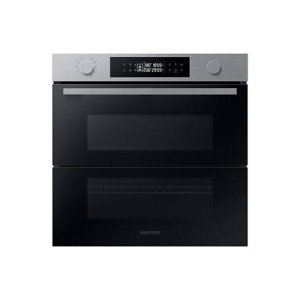The Rise of Built-In Ovens: A Seamless Approach to Modern Cooking
In modern kitchens, where design visual appeals blend seamlessly with performance, one appliance stands out as a true video game changer: the built-in oven. As house owners and chefs alike continue to look for ingenious solutions that enhance their cooking experience, built-in ovens have become significantly popular. This article checks out the advantages, considerations, and trends surrounding built-in ovens, highlighting why they are an important feature in modern-day cooking areas.
What is a Built-In Oven?
A built-in oven is a kitchen area appliance designed to be integrated into the cabinetry of a cooking area instead of standing alone. Unlike traditional freestanding ovens, which can be moved and placed anywhere, built-in ovens been available in different designs and sizes to fit particularly within designated spaces. Readily available in single or double configurations, these ovens use a streamlined look that matches modern-day kitchen area designs.
Advantages of Built-In Ovens
1. Space-Saving Design
Among the most enticing benefits of built-in ovens is their space-saving design. By incorporating the oven into cabinetry, you can maximize valuable counter and floor area. This is especially beneficial in smaller kitchens, where taking full advantage of room is important. Built-in ovens can be installed at eye level, making them more accessible and reducing the requirement to bend down.
2. Aesthetic Appeal
Built-in ovens add to a streamlined and cohesive cooking area style. Readily available in numerous surfaces-- such as stainless-steel, black, white, and customized cabinetry-- they can blend perfectly into the total decor. This aesthetic appeal improves the kitchen's visual harmony and elevates the space, developing a modern-day and sophisticated atmosphere.
3. Enhanced Functionality
Lots of built-in ovens come equipped with sophisticated cooking technologies, such as convection cooking, steam ovens, and smart functions. These improvements permit versatile cooking choices, making it much easier to attain professional-level outcomes at home. Smart built-in ovens can even link to Wi-Fi, allowing users to manage the oven from another location, get notices, and gain access to a range of cooking programs and dishes.

4. Enhanced Ventilation
Due to the fact that built-in ovens can be integrated with kitchen hoods and ventilation systems, they can help preserve much better air quality and reduce cooking smells. This is especially significant for those who love to prepare with aromatic spices and components, as a reliable ventilation system can keep the cooking area comfortable and inviting.
5. Customization Options
Built-in ovens provide a wide range of customization alternatives to fit private cooking styles and needs. From professional-grade home appliances with several cooking modes to compact styles for smaller kitchen areas, house owners can select the oven that fits their specific requirements. Many producers likewise provide adjustable front panels, enabling you to match the oven's appearance to your cabinets for a genuinely merged look.
Considerations When Choosing a Built-In Oven
While built-in ovens have numerous advantages, there are important factors to consider to remember before making a purchase:
1. Cost
Built-in ovens generally come with a higher cost than their freestanding equivalents due to their design and setup requirements. It's crucial to consider both the cost of the oven and any additional costs related to cabinets modifications or installation.
2. Setup Requirements
Setting up a built-in oven often needs professional help, specifically if you require to customize existing kitchen cabinetry. Guarantee that you consider any expenses connected with installation, consisting of labor and potential kitchen cabinetry changes.
3. Size and Dimensions
Before buying a built-in oven, determine the designated space properly to ensure an appropriate fit. Built-in ovens can be found in numerous sizes and setups, so picking one that aligns with your requirements and cooking area design is essential.
4. Lifestyle and Usage
Consider your cooking habits and requires when choosing a built-in oven. If you frequently host large gatherings, a double oven may be more beneficial. On the other hand, if you have a compact cooking area, a single-wall oven might be sufficient.
Patterns in Built-In Ovens
The cooking area device market is continually progressing, and built-in ovens are not exempt from emerging trends. Some current trends include:
Smart Technology Integration: With the rise of clever home innovation, built-in ovens now frequently include connectivity alternatives. This allows users to keep an eye on cooking development and change settings by means of mobile apps.
Energy Efficiency: As sustainability ends up being a concern, many manufacturers are investing in energy-efficient built-in ovens that minimize energy intake while keeping performance.
Multi-functional Designs: Built-in ovens now provide functions such as air frying, sluggish cooking, and steaming, providing flexibility that satisfies a broad range of cooking techniques.
Conclusion
Built-in ovens unquestionably represent an ideal blend of style, function, and benefit in today's kitchens. As more property owners choose this contemporary solution, the focus shifts to creating a cooking area that is as aesthetically pleasing as it is useful. Whether you are building a new home or remodeling your kitchen area, thinking about a built-in oven might raise your culinary experience and change your kitchen area into an elegant and practical sanctuary. With a range of options offered and continuous innovations in innovation, built-in ovens stay a standout option for both newbie cooks and cooking enthusiasts alike.
